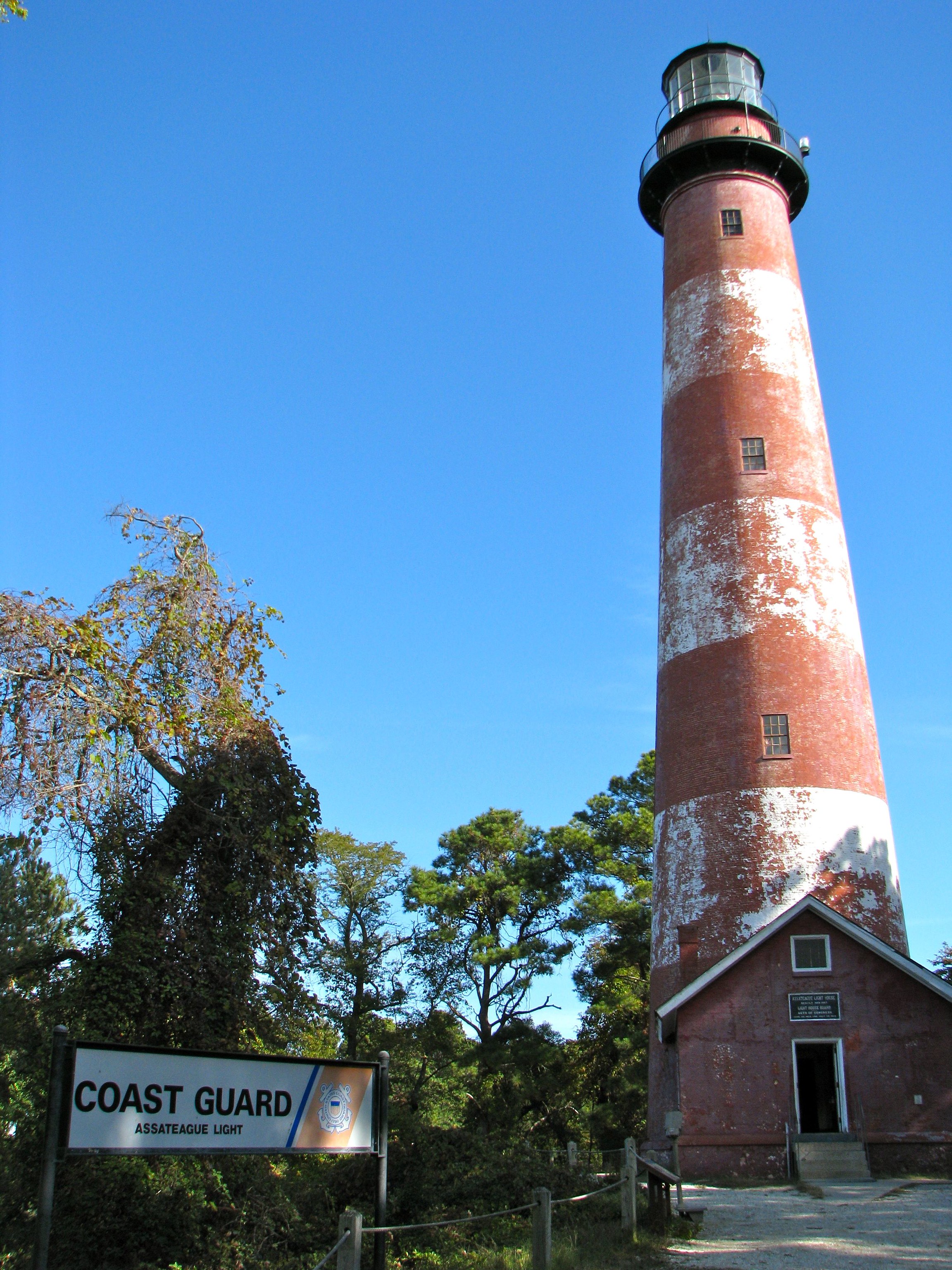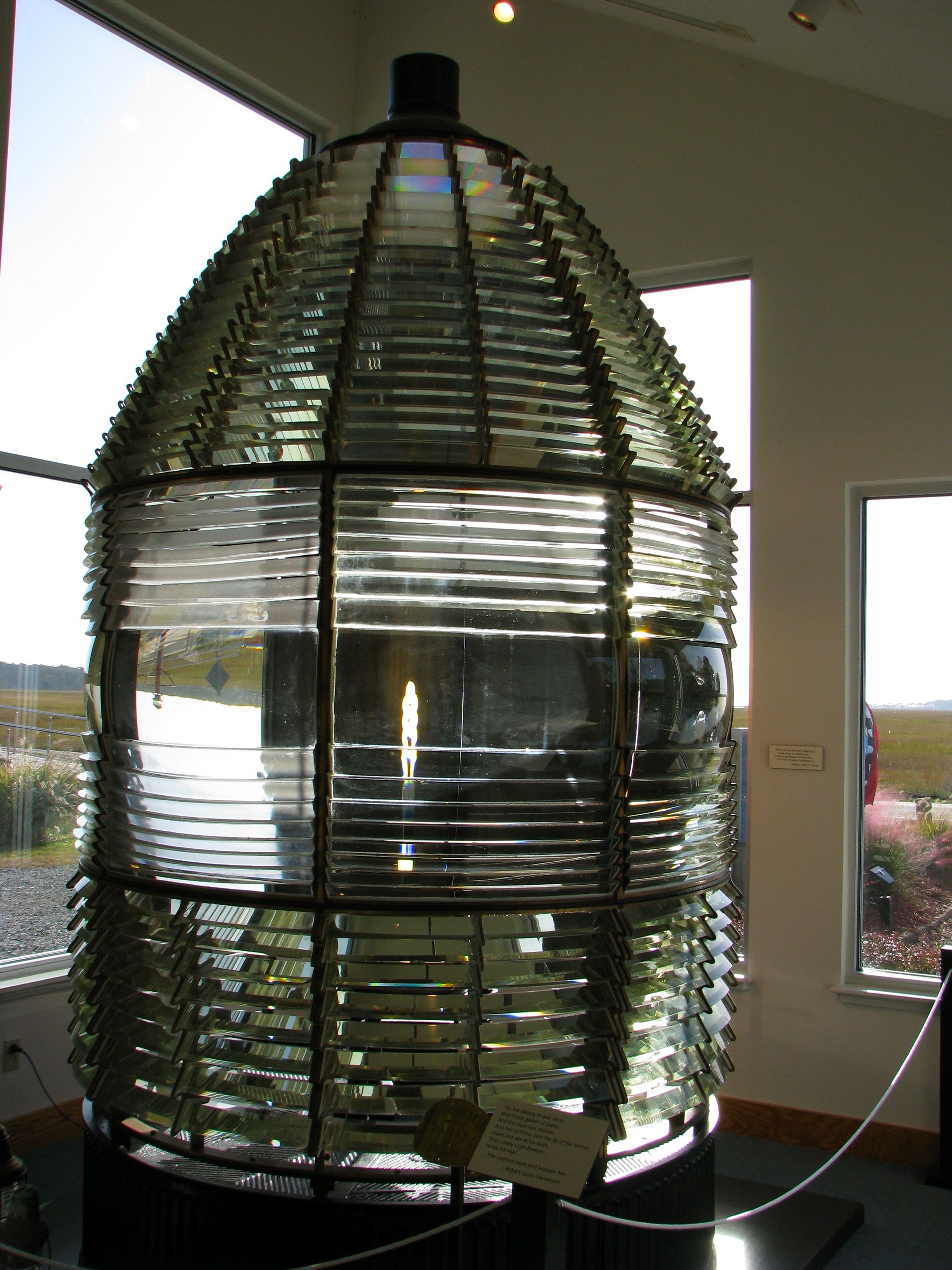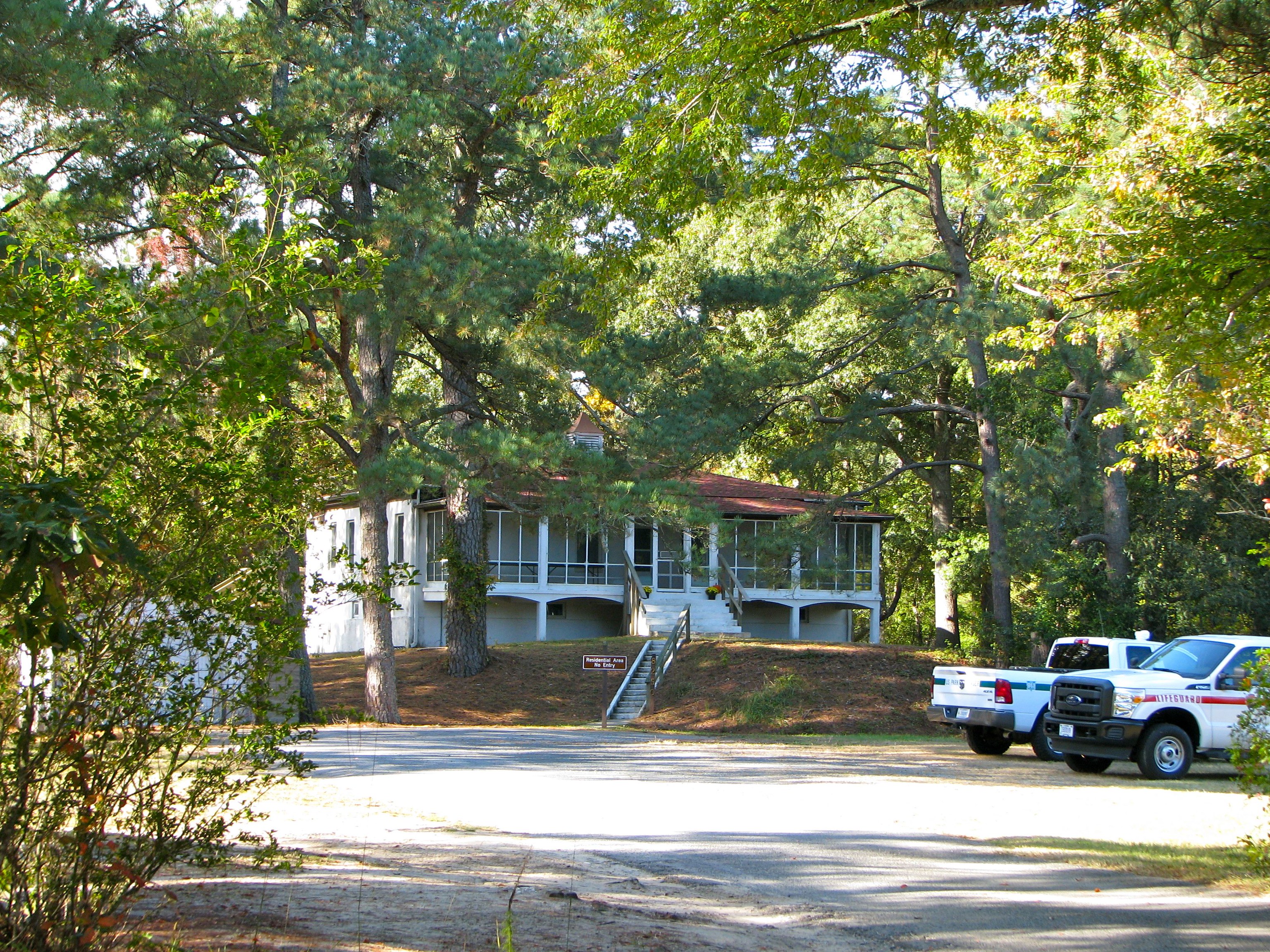Chincoteague National Wildlife Reserve; Assateague Island, Virginia (October 2012)
The Assateague Lighthouse (map) is easily accessible and open to the public. A simple trip to the Chincoteague National Wildlife Refuge on the northern end of Virginia’s Eastern Shore is all that’s required. Drive through the quaint fishing village of Chincoteague and across the causeway onto Assateague Island, then follow the signs.
The lighthouse is located near the entrance accessed via an easy wooded path from a parking lot on the right side of the park road. The path rises to the top of a small sandy knoll to the lighthouse location. It is open to the public from April through November, every day during the summer and on Fridays and weekends during Spring and Fall.
A small admission fee allows one to climb the iron spiral staircase to the observation deck atop the tower for sweeping views of Assateague and Chincoteague Islands, and out to the Atlantic Ocean. One wonders why the light isn’t located a little closer to the Atlantic shoreline. That’s because Assateague is a barrier island, and like all sandy barrier islands it has a tendency to shift, move, grow and shrink. The lighthouse used to be closer to the shore. However, in this case the island grew several square miles over the last century and a half.
History

The lighthouse at Assateague was one of the latter navigational aids built along the eastern seaboard. It filled a gap between Cape Henlopen towards the north on the Delaware side of the Delaware Bay opening, and Cape Charles at the southern end of the peninsula at the mouth of the Chesapeake Bay. The government opened a light station on Assateague Island in 1833, however it wasn’t adequate. The tower didn’t reach high enough and the light didn’t shine bright enough. It didn’t sufficiently protect ships sailing past the coastline.
The current version dates to 1867 with automation installed in 1965. The Coast Guard continues to maintain the beacon as an active navigational aid.
Characteristics

The most striking and immediately visible characteristic of the Assateague Island lighthouse must be its coloring: alternating red and white stripes. Lighthouses along the mid-Atlantic coastline don’t generally use red coloring. The lighthouse needed serious need of a new coat of paint during our visit (2012) although a funding shortfall curtailed that effort.
The tower rises 142 feet atop a naturally elevation rise, giving it a 154 foot focal plane. Its brick construction could be observed within the interior as we climbed the staircase.
Fresnel Lens

The current version of the Assateague Island lighthouse contained a first order Fresnel lens, a major lens intended to overcome the deficiencies of the earlier light. Oil lit the original lens, later replaced by electrical bulbs powered by a generator. A Directional Code Beacon replaced the Fresnel lens in the 1960’s when electrical cable finally reached the site.
A small museum on Chincoteague Island can be found at the base of the causeway leading to Assateague. It includes a number of fascinating exhibits including the taxidermy body of the famous pony, Misty of Chincoteague. However, the original Fresnel lens that once illuminated the way far out to sea dominates the museum with its sheer size. It sits immediately through the museum doors.
Keepers Quarters

One can find the old Keepers Quarters just south of the lighthouse. It houses seasonal workers for the U.S. Fish and Wildlife Service so the public cannot access it. The Coast Guard owns the light and the Wildlife Service owns the grounds and the quarters. I couldn’t take a better without going on to the actual premises and obviously that might be a problem, judging by the trucks in the lot. So I took a picture from the roadway instead.
Readers who have an interest in lighthouses might also want to check my Lighthouse Index page.

Leave a Reply